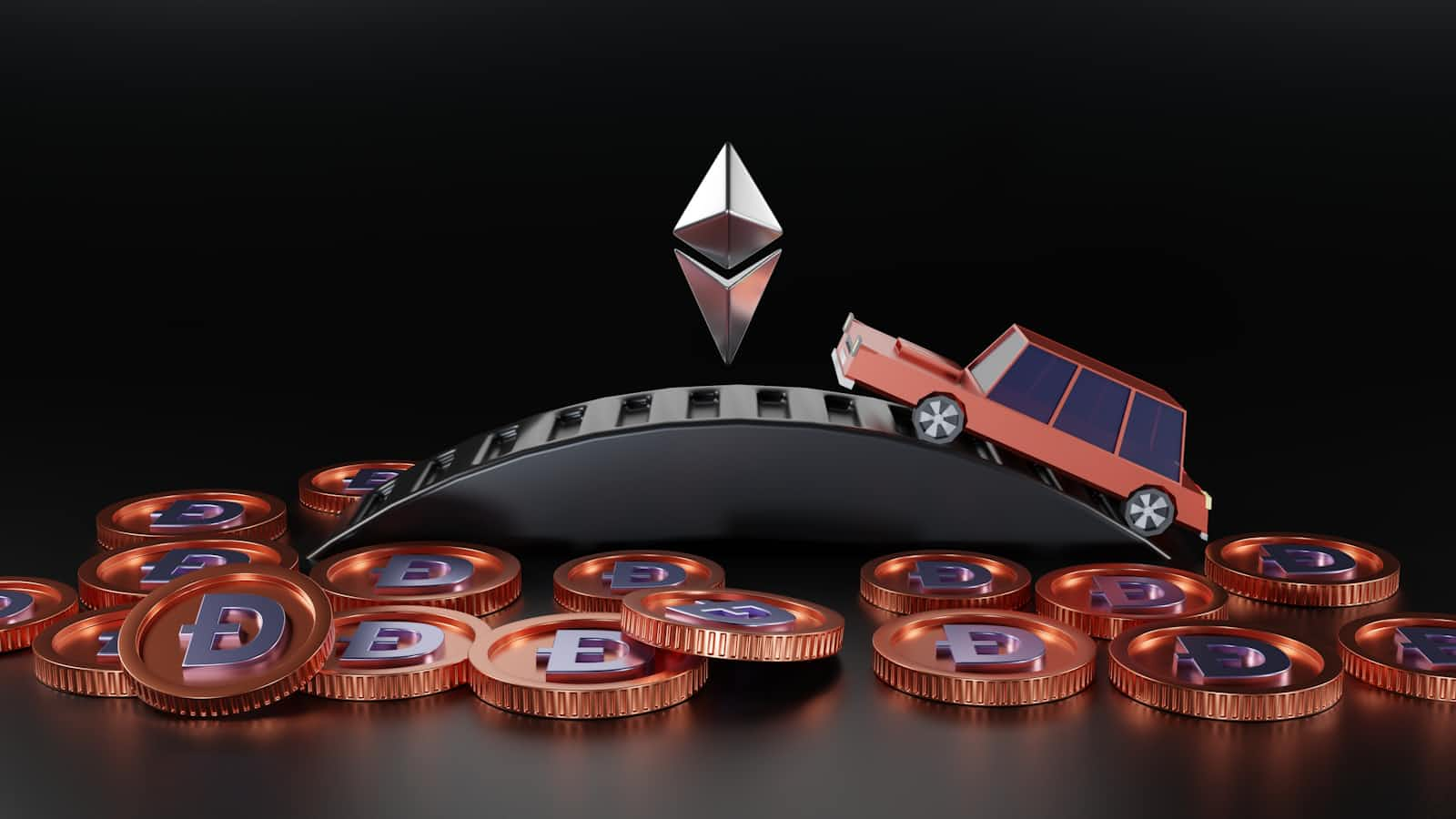Ethereum L2s Are Not Competitors: Roadmap to Shared Growth
 John Fáwọlé
John Fáwọlé
Competition is very keen in major industries, such as chip manufacturing, fast food, and many others. However, these industries have been around for a while, so the intense competition there is not quite surprising.
What is rather more intriguing is the level of competition on Ethereum, which is less than 10 years old. Almost every month on crypto Twitter, there is a new Ethereum L2 that is “onboarding the next one billion users to crypto.”
At the moment, there are 80 Ethereum L2s and 81 upcoming ones, according to L2Beat. Of course, there are a gazillion of unrecognized ones.
L2s are poaching one another’s talents aggressively. Some allegedly copy-pasting other’s code.
While intense competitions are ongoing about which protocols will be the leading L2s, it is necessary to pause and reflect.
I believe Ethereum L2s are not [or rather, should] be competitors. In this essay, I will expound on this philosophy and practical ways it can work to take Ethereum L2s on a roadmap to shared growth.
Why L2s Had to Compete for Builders and Users
It would be intellectually dishonest of anyone not to acknowledge how fierce the competition among Ethereum L2s has become, and rightly so.
Let’s zoom out of the Web3 industry for a minute. This is business. Generally, in business, you have to sell products to different people. If someone else offers a similar product, you will compete [even unconsciously] to ensure users prefer and use your product rather than your competitor's.
Something similar happens in our industry. Therefore, it is sheer commercial naivety not to consider that there are different players in the same arena. As a result, knockdowns are inevitable.
This is the logic: the more people build on an L2, the greater its economy. So, any L2 that wants to have a more flourishing economy will be competing in the field.
We shouldn’t see this “competition” from quite a vague or rather academic perspective. That is why it is brilliant to ask, ”What are L2s competing for?”
The answer is split into two entities: builders and users.
Builders, in this context, are founding team members and product owners who create protocols on a chain. They are essential to creating on-chain products that will attract more users to the blockchain.
Imagine there is a protocol on Base where people can pay [or subscribe] for internet connections.
The more people pump thousands, or perhaps millions, of dollars into buying internet connections via this protocol, the more Base will record a higher volume of users and economic transactions.
This is why builders are so important for the growth of any blockchain, particularly L2s. For anyone who noticed, this was one of the reasons Starknet—at the beginning—focused almost solely on grooming and attracting developers.
The results are various protocols like Ekubo and others on Starknet today.
Let’s move on to the second entity L2s compete for - users!
Users are actually the prime movers behind the success of any protocol or blockchain. No matter the superfluity of products on an L2, it will fade into oblivion if users are not attracted to it.
At this juncture, it is pivotal to remember that users have too many options for interacting with blockchains for their benefits and purposes. Meanwhile, there are other blockchains outside of the EVM, which makes the options more abundant for users and competition more fierce among builders.
Like Sam Altman says, “There is no OpenAI without its users.” In the same way, there is no protocol without its users.
This explains why all L2s target users and try to acquire them through various programs, such as contests, and every possible means.
Why Ethereum L2s Are Not Competitors
As I’ve discussed so far, Ethereum L2s are prima facie seen as competitors. While that is not a problem, it might be an actual problem. I’ll explain…
Peter Thiel gave a lecture some years back at Stanford titled “Competition is for Losers.” On this note, maybe the competitive landscape of Ethereum L2s shows that these protocols are not really winning in the grand scheme of things.
You might want to dismiss this possibility by saying, “But countless L2s are doing million-dollar volumes daily.”
What if the same user class is piping liquidity across these different L2s? By the way, can we do like we did not notice a couple of alleged wash-trading that happens on some L2s to portray that they are doing millions when they are indeed far from it?
That is all besides the point; the main point is that Ethereum L2s are not competitors.
A more accurate way of seeing layer2 protocols on Ethereum is to see them as the network and cultural extensions of Ethereum for specific markets and use cases; it will all make more sense when we see things through these lenses.
And that is the problem. Some L2s only target specific markets and use cases but do the same things they find others do. But as you know, whenever A and B copy what C is doing, they will only become a prototype of B.
This explains why several Ethereum L2s today are arguably doing the same thing. Competition exists because these blockchains lack uniqueness.
Perhaps this further reinforces Thiel's statement that competition is for losers. And losers, in the context of our discussion, are blockchains without uniqueness.
Target Different Markets: Road to Uniqueness
The issue anyone would have noticed is that blockchains abstract themselves from people in the real world. After all, we are locked in solving hard technical problems.
At the same time, we are breaching a natural law of business and commerce this way.
Ideally, L1s like Ethereum should be concerned with fixing hard technical problems while L2s go into the field!
MorphL2
This is one of the reasons MorphL2 is admirable. Right from the start, they have clarified that they are after the consumer market and only encourage those who want to build consumer applications to come to their protocol.
That is a clear example of a blockchain that has targeted and mapped its market. If anyone on crypto Twitter is asked about blockchains for consumer apps, they will most likely mention MorphL2.
Celo
On this note, Celo is perhaps more admirable. Celo supports strictly consumer apps as well, but it focuses more on developing nations in Latin America and Africa.
You might want to ask, “How far has this brought them?”
According to a Uniswap Labs report, they had processed $1.6 billion as of September 2024. Meanwhile, they only made $86 million in volumes in the previous year.
This points to something: the more an L2 recognizes its market, the higher its chances of effortless prosperity.
Base
I would highlight the last Ethereum L2 in this subheading in Base! It was launched in 2023 and is now worth $1.7 billion TVL.
In terms of market targeting, Base is focusing on day-to-day payments. A few coffee shops in San Francisco are collecting payment from Base.
In addition, Base is also onboarding musicians and other players across all works of life; looking beyond the “tech bro” bubble.
Lessons from OP Stack, Elastic Chain, and AggLayer
Perhaps one of the most interesting developments witnessed in the Ethereum ecosystem was the creation of OP Stack.
It acted as the springboard for many teams, even other L2s, to spin up their blockchains. Base and many other L2s leverage OP Stack.
That is a classic example of collaboration over competition. Since Optimism rolled out this trend, zkSync and Polygon have created something similar with Elastic Chain and AggLayer, respectively.
Notably, as many L2s build with one another’s stack, they create an ecosystem of shared growth. The more A grows, the more B does as well.
There are many lessons for L2 founding teams to learn from that. They should see one another as fellow builders rather than competitors.
Zoom Out: The Battle is Bigger
From time to time, everyone in this industry should read the Cypherpunk Manifesto. By design, Web3 is not just another industry that was spun out of thin air to suck money and live in a bubble. No, far from that!
And occasionally, everyone must be reminded of why we are here.
Privacy and financial inclusion are broken in the outside world, and blockchain solves these issues.
We shouldn’t be caught in the web of micro-competitions that we lose the bigger picture.
Blockchain can greatly enhance humanity's quality of life and experience, a huge task in this phenomenal time in history.
So, enough of chain wars; everyone should enter Founder Mode and build something people want.
We should stop rotating the same million users among ourselves and rather go into the real world where billions are.
Thank you for reading to this point. You should follow me on Twitter.
Subscribe to my newsletter
Read articles from John Fáwọlé directly inside your inbox. Subscribe to the newsletter, and don't miss out.
Written by

John Fáwọlé
John Fáwọlé
Web3 Technical Writer | Content Lead | Marketing Strategist | For Devs